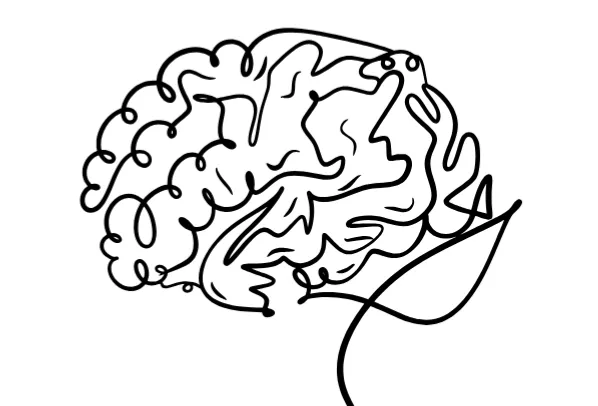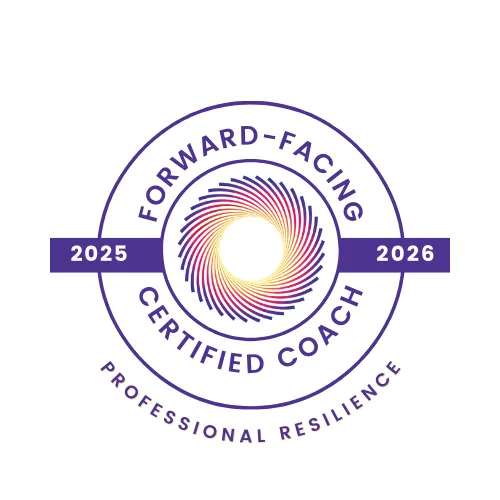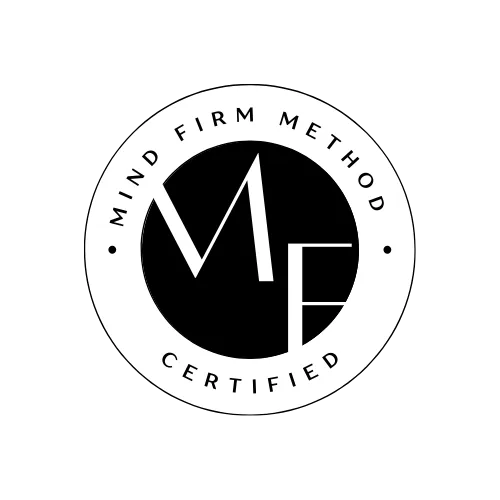
Bounce back stronger.
Burnout solutions for high achievers
ARE YOU FEELING CONSTANTLY STRESSED,
FRUSTRATED AND OVERWHELMED?
It's time to have the life that feels as amazing inside as the success you've created looks on the outside.
Here is my free, practical and applicable video series on stress. It’s an easy way to start to breakup with burnout.
registered nurse and life coach
Hi there, I'm Mona
I’m an RN and burnout expert passionate about helping healthcare professionals and high achievers reclaim their energy and passion. I take care of those who give everything to care for others. often at the expense of their own well-being.
For high achievers, working harder has always been the key to success—until burnout takes over. Often compassion fatigue sets in, and suddenly, the “dream life” you built feels impossible to enjoy. It’s time to take care of you.
When working harder isn't working, I teach you how to work differently.
.

my Approch
Stress is created from your brain and nervous system. Through my 12 week, outcome-driven coaching process, I provide you with tools and support that explain where your brain and nervous system are misinformed. Using neuroplasticity and recalibration of the nervous system, these strategies are used to release the underlying triggers of stress and help you find peace, revitalization and calm in the mind and body.
With these tools and concepts I teach, you will be able to conquer your career, work and personal relationships, re-engage in hobbies and do things "for fun" and be able to live your life with full authenticity.
You may have learned about the brain and nervous system in school and training, but do you know how to manage your own? Let me show you how.
What is Burnout?
Burnout is a state of mental, emotional and physical exhaustion caused by excessive and chronic stress. It can happen to anyone, but most often to those who are high achievers, who value success and never give up. Those qualities are often paired with being self-critical, perfectionistic, and base value on performance.
Guess what? The deep rooted patterns in your brain and nervous system that brought you the success you now have, are also the cause of your burnout.

MY SERVICES
Mindfulness and Stress Reduction Coaching
Are you looking to accelerate your burnout recovery by partnering with an expert?
If you are serious about overcoming burnout for the last time, The Mind Firm Method with Resilience Training 12 session program is where I work one on one to teach and implement the tools to retrain your nervous system and brain to work for you, not against you. This program brings you increased vitality, confidence and joy back to your job and relationships. I teach you how to work differently, not harder.

Burnout Reduction Group Training
Do you want to help all of your staff learn these concepts?This lecture offers an explanation of the brain and nervous system and its memorized patterns of thoughts and behavior. I teach tools that can be implemented immediately to effectively decrease burnout (yep, tools that have been proven in clinical studies.)

Stress and the Brain
For years, I lived in a cycle of frustration. My relationships weren’t what I wanted them to be, and no matter how hard I tried, I kept reacting in ways that didn’t align with the person I wanted to be. My relationship with my son was one of the hardest parts. He’d push back, have an attitude, or not listen, and I’d snap—raising my voice, getting defensive, often our discussions turned into arguments and often went completely out of control. Then I’d regret what I said and how I acted and wondered why I couldn’t just stay calm.
When I discovered life coaching, I learned how my thoughts were driving my behaviors, and I worked hard to shift my mindset. I practiced new thoughts and affirmations, I planned ahead of how I was going to act when a stressful situation arose. But even after all that effort, there were still moments when—despite knowing better—I’d react in ways that felt completely out of my control.
That’s when I took a deep dive into learning about the nervous system. I discovered how our body, not just our brain, plays a huge role in how we think, feel, and respond to life. Although our bodies and brains are complex, even a base level understanding of how they function, I have found, is empowering. Learning about the choices we have for how to respond to our own bodies before they are in full-blown crisis can help us make better choices that reflect our true selves. If you've experienced a history of distress, shame, perfectionism, overwhelm and chronic stress you may feel that the sensations in your bodies and the thoughts in your mind are simply just happening instead of you having a sense of control over how you respond with that information.
Now it's a lot easier for me to see what is going on behind my behaviors—my brain and nervous system are acting perfectly to protect me and often are in overdrive doing their job extremely well. I understand why we react the way we do, why stress changes us, and most importantly, how we can retrain both the brain and the nervous system to work for us instead of against us.
If you’ve ever wondered why stress hijacks your best intentions, why you keep falling into the same patterns, and want to know how to finally break free and create lasting change, you’re in the right place.
How the Brain Develops
To understand stress and the brain, it's helpful to know how the brain develops. Dr. Bruce Perry describes brain development like an ice cream cone—starting from the bottom and growing upward.
Brainstem (The Cone) – This is the base of the brain and takes care of essential functions like heartbeat, breathing, and temperature regulation. Your brain stem also determines how your body will respond to threats.
Diencephalon (First Scoop of Ice Cream) – Controls instincts such as movement, sleep, and appetite.
Limbic System (Second Scoop) – Located in the midbrain (above your ears), this is where emotions, memory, bonding, and rewards are processed.
Cortex & Prefrontal Cortex (The Final Scoop on Top, PFC) – Located behind your forehead, this is where creativity, problem-solving, language, and hope for the future are processed.
The Stimulus of Stress to the Brain
It's important to know brain development because our brain processes information in the same sequence as it developed. When we encounter something, the information first goes through the brainstem, then moves up through the diencephalon, limbic system, and finally reaches the cortex. This is why we often feel and act before we think—our emotional and survival responses kick in before our logical brain does.
When you're reacting to what your brain stem is telling you, you may (or may not) notice urges to do something but you may not understand why you have those impulses. Ignoring your body can result in rigid and compulsive behavior because your brain stem is acting from a place of survival without the support of your thinking brain (PFC) to help you regulate it.
The limbic system is slightly more advanced than the brain stem; its main role includes experiencing attachment with others, creating certain types of memories and working with the brain stem to regulate hormones that contribute to a response from a physical or emotional threat. The limbic system is where your emotions, and the meaning you make from them, live. Based on prior experiences this part of your brain determines what type of emotions are evoked in you.
Imagine touching a hot stove. You don’t stop to think, Is this hot? Should I move my hand? No! Your brainstem reacts instantly, pulling your hand away before your conscious brain even registers what happened. This is survival in action! This is very helpful to our body that the sequence goes in this direction and we can respond in a matter of milliseconds.
Let's talk again about the cortex and the prefrontal cortex. This is the last part of the brain to receive the stimulus. Lobes in your cortex influence your physical perception and motor functions. It helps you be aware of your body in space, this is called proprioception. This part of your brain even allows you to think about thinking which is called metacognition. Your PFC continues to develop until your mid to late twenties. The PFC is what enables you to be aware of and then process your emotions and your experiences. You can bring awareness to what is going on in different parts of your brain including the sensory information that the brain stem receives from the rest of your body. In order to know how stress is affecting you, you must be aware of what is going on in your body and this is what your prefrontal cortex allows you to do.
The Amygdala and the Hippocampus: The Brain’s Fear & Memory Centers
Two key players in how we process stress and emotions are the amygdala and the hippocampus, they live in the limbic system. They work together to determine how we respond to different experiences, especially those tied to fear and memory.
Amygdala (The Smoke Alarm) – This almond-shaped structure is responsible for detecting threats and triggering the fight, flight, or freeze response. It rapidly processes emotional stimuli and determines if something is dangerous. When overactive, the amygdala can cause us to react impulsively with fear, anger, or anxiety, even in situations that aren’t truly dangerous.
Hippocampus (The Note-Taker) – This seahorse-shaped structure is responsible for processing and storing memories. It helps distinguish between past experiences and present reality. A well-functioning hippocampus ensures that we can recall useful details without getting overwhelmed by past fears. When stress is chronic, the hippocampus can shrink, making it harder to regulate emotions and recall positive memories.
These two structures are constantly communicating. The amygdala scans for danger and reacts instantly, while the hippocampus helps us assess whether the danger is real or just feels similar to a past threat. When the hippocampus is healthy, it helps regulate the amygdala’s responses. But under chronic stress, the hippocampus weakens, and the amygdala becomes overactive, making us more prone to fear-based reactions.
For example:
Public Speaking – If you forgot your words in a speech once and felt embarrassed, your amygdala may trigger anxiety every time you stand in front of a crowd, even if the situation is different.
Dogs – If a dog bit you as a child, your hippocampus may store details like barking sounds or fur texture, making you feel uneasy around any dog, even a friendly one.
Driving in Traffic – I was rear-ended once, and for years afterward, I would still get startled looking in my rearview mirror when I thought the car behind me was going too fast. My body would automatically tense up, I’d gasp, and I would involuntarily brace for impact, even if nothing happened. My amygdala had stored the memory of the crash as a danger signal, and my hippocampus struggled to differentiate between past and present, making me react as if I was about to be hit again.
How Stress Affects the Brain
When we are stressed, and when our nervous system goes into fight, flight, fawn or freeze, blood flow is directed away from the PFC and the energy is given to other parts of the brain like our limbic system. Our limbic system (our emotional brain) takes over, and our prefrontal cortex goes offline—like a seesaw, when one is up, the other is down. That means when we’re overwhelmed, it’s harder to think clearly, problem-solve, or regulate our emotions. Instead, we’re reactive, cranky, fearful, short-tempered, and hypercritical and act impulsively
Chronic stress can shrink the prefrontal cortex and the hippocampus and make the amygdala even more reactive, leading to, decision fatigue, overreacting to small issues, difficulty calming down and feeling emotionally drained.
Understanding this can help us work with our brain, not against it by using strategies to bring the prefrontal cortex back online. When the PFC is online. information from all three parts of your brain are linked together, this is called vertical integration. You can then pay attention and respond to the information your whole brain is giving you, which is essential to responding as your authentic self.
So, why is this important? Our brain and body work together to keep us safe, but sometimes they overreact, causing stress-based behaviors that feel out of our control. Understanding brain development—how the brainstem, limbic system, and prefrontal cortex process stress—helped me recognize that my reactions weren’t personal failings; they were survival responses. Chronic stress weakens the brain’s ability to regulate emotions, making it harder to stay calm and intentional.
By learning how to engage my prefrontal cortex and regulate my nervous system through body-based techniques, I finally gained control over my reactions. Now, I catch stress signals early, pause, and shift toward connection instead of conflict.
So, now what do I do? I try to recognize the feelings that my body is giving my brain, I allow those feelings, but use my brain to answer these questions:
1- Am I safe?
2. Do I feel safe?
3- How can I help my body feel safe?
I have found through breathing techniques, becoming a "wet noodle", relaxing the pelvis, etc. i can relax my body to feel safe. ( More information to come on these techniques.)
My relaxed body then relays the information back to my brain and reminds me that I am safe and there is no danger. This allows me to keep my prefrontal cortex online and I can connect to all parts of my brain. I can still know that something might be causing me stress, but there actually is no danger and no need to go into fight, flight, freeze or shutdown. And rather than ignoring the signals, stifling them or shaming myself, I am open, compassionate and curious. I work through the emotions and remain in control and act as my authentic self.
Final Thoughts
Our brain and nervous system’s number one job is to keep us alive. But when we understand how they work, we can learn to respond to stress in a way that supports us, rather than just reacting on instinct. Knowledge is power, and the more we understand our brain, the better we can navigate stress and emotions in a healthy way.
Today, my relationships have all improves, even with my son. I still have moments where I want to snap, and I am still imperfect at this skill, but now for the majority of the time, I can feel it happening in my body before I react. I catch it. I pause. I shift. And instead of fueling the tension, I can guide myself—and even those around me—toward connection instead of conflict.
Testimonials
Mona is very intuitive...I came to her for help concerning my family relationships. We talked about boundaries and things that are within our control. We also discussed things that we don't have control over. Deciphering between these two things has really helped me cope and manage very difficult relationships.
Mona is gifted and helped me to help myself! ❤️ Thank you again and again!
JH
I started working with Mona when I found myself mentally and emotionally "stuck." I had had some big changes in my life, and found myself unable to move past my circumstances.. Working with Mona, I was able to look at my beliefs about myself, and realize that most of them were not true!! With her help, I reframed my thoughts and my narrative. It was a huge light bulb moment for me! It has been freeing to shed old thoughts and habits, for new thoughts and habits that work for me! This work is hard, but doable with Mona's help!
CJ
You can’t really understand the power of having a good coach until you experience it. Working with Mona will become a tool you will use to gain happiness in your life. Working with Mona was refreshing and necessary for me to gain new insight, new ideas and a new perspective instead of just falling back on my way of making sense of the world or what beliefs and stories I have told myself or others have told me... When you say yes to having Mona be your coach, you are saying yes to creating what you want and becoming who you are meant to be!.
AS



HOME
LEGAL
FOLLOW
Copyright 2025. Mona Tippets Coaching. All Rights Reserved.
